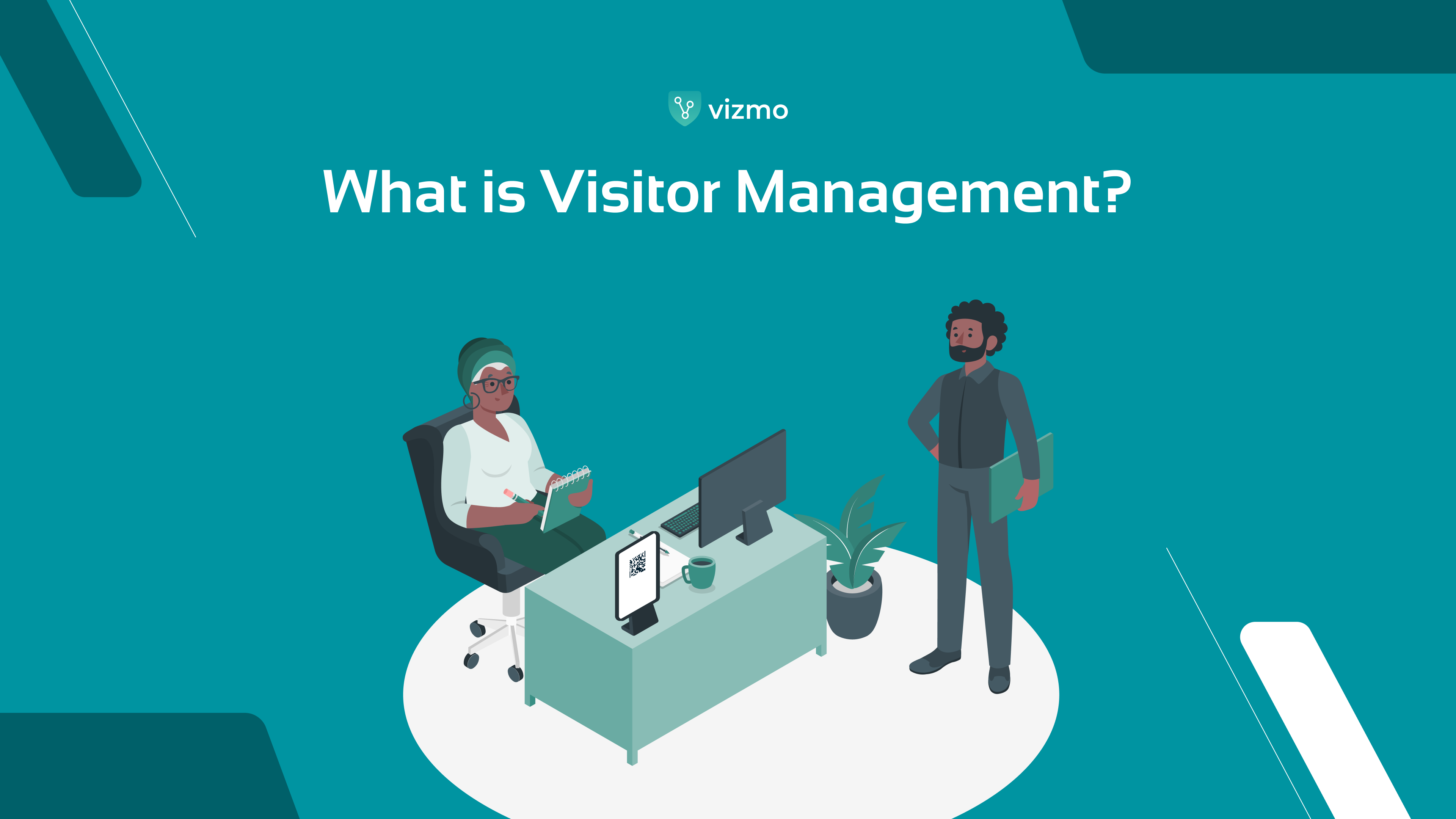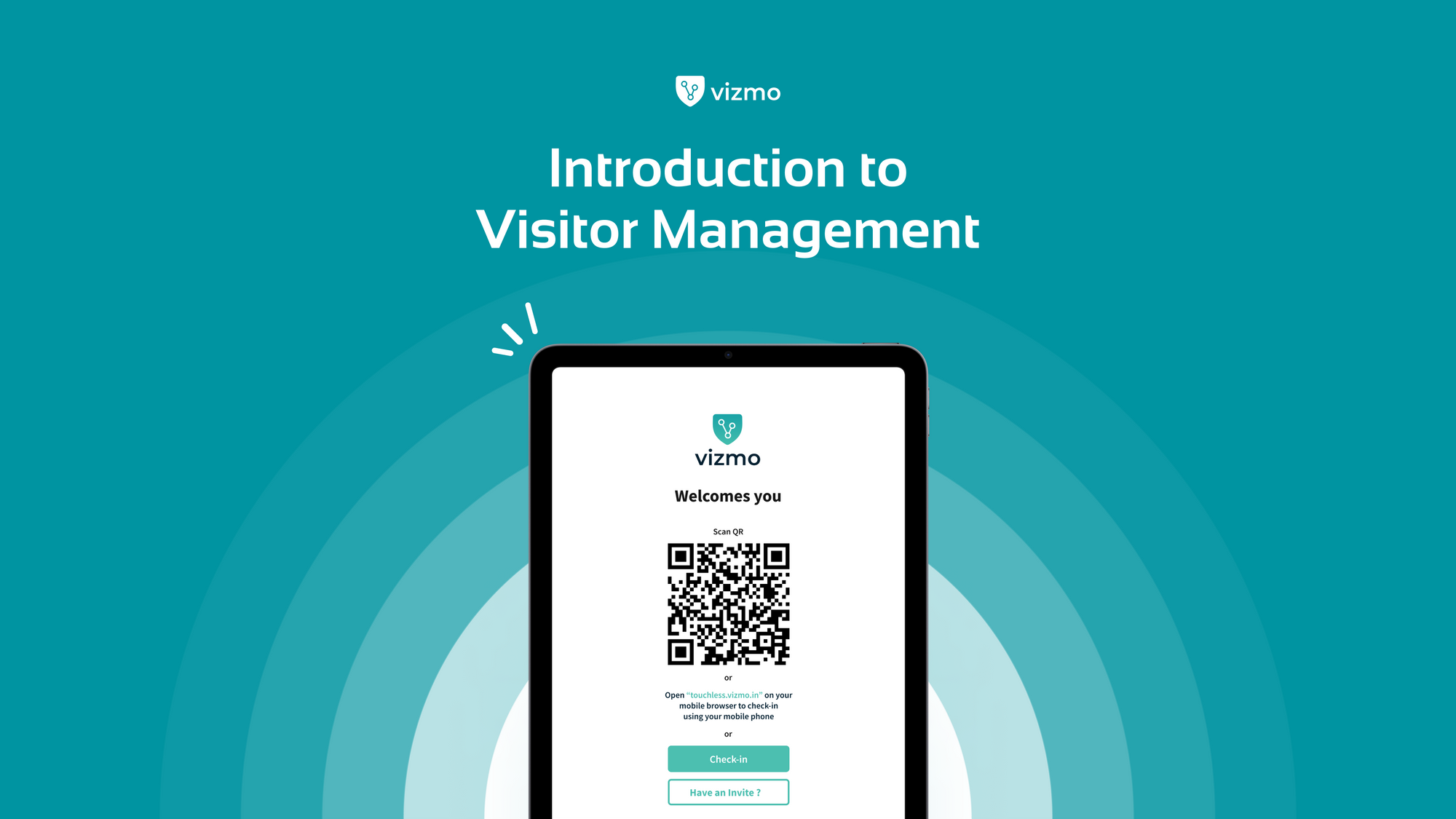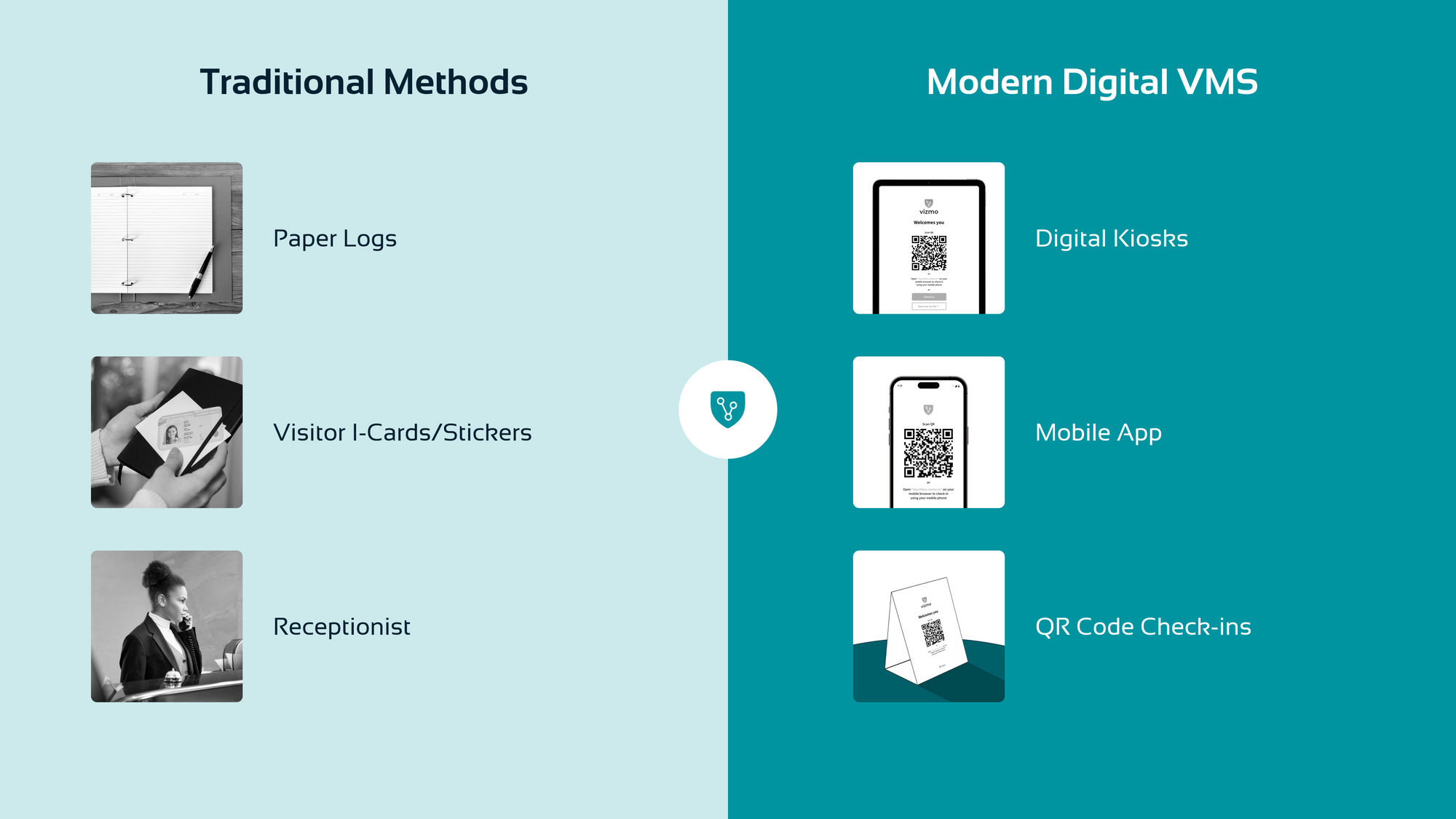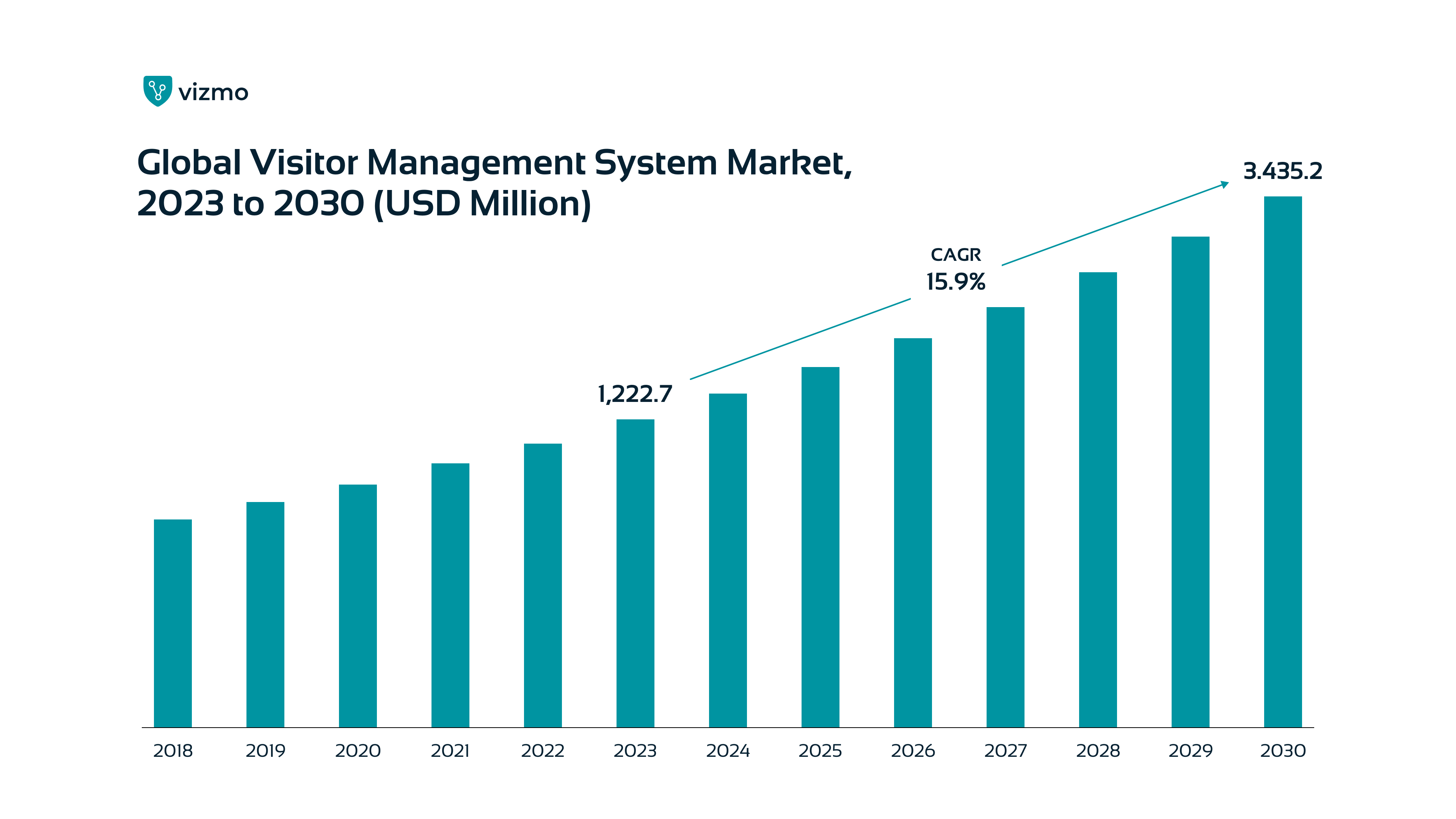What is Visitor Management?

We live in a world of automation, where busy individuals focus on their core tasks and they want to avoid doing repetitive tasks manually. It's essential to automate mundane, repetitive processes to ensure operational efficiency through streamlined workflows. For many organizations, the front desk is the first point of contact for visitors. Traditionally, this involves a lengthy process: visitors check in, fill out paper logs with important details, undergo verifications, and wait for multi-layered manual authentication by a receptionist before being allowed entry. But isn't this process excessively lengthy and tedious? It's a process that feels outdated and inefficient in today’s digital age — a stark contrast to the sleek, modern image many companies strive to project.
But what if there was a solution that could transform this reiterative process into something seamless, automated, and hassle-free? Imagine a paperless, digital solution that not only streamlines the check-in process but also enhances security, improves data management, and leaves visitors with a lasting impression of your organization's efficiency and innovation. The solution we are talking about is the visitor management system.
At Vizmo, we understand that the way you welcome visitors is a powerful statement about your company's values and professionalism. But what exactly is visitor management, and why does it matter so much? It's far more than just monitoring who enters and exits your premises; it's about crafting an experience that resonates long after your guests have left. In this blog post, we'll understand the concept of visitor management, explore its numerous benefits, and reveal how it can transform your organization's approach to hospitality and security. From creating lasting first impressions to streamlining operations, we'll show you why effective visitor management is a game-changer in today's data-driven world. So, let's dive in and decode this crucial aspect of modern business operations, examining how it can elevate your company's image, enhance security, and ultimately contribute to your overall growth.
What Is Visitor Management?

A Visitor Management System (VMS) is a sophisticated yet simplistic software application that efficiently manages and monitors visitors to a facility or building. This system replaces old manual visitor registration methods, improving safety and facilitating the tracking of visitor information.
At its core, visitor management is the process of tracking and managing the flow of visitors in and out of a facility. It's about creating a seamless, secure, and professional experience for everyone who walks through your doors, be it clients, partners, job candidates, or delivery personnel.
Gone are the days when visitor management meant a receptionist or a front desk executive with a pen and paper, jotting down names and assigning sticky visitor badges. Today, it's a sophisticated system that can enhance security, streamline operations, and even boost your company's image.
The Evolution of Visitor Management: From Pen and Paper to Digital Solutions
Traditionally, visitor management relied on manual methods. It worked, sort of, but it had its fair share of problems. Handwriting could be illegible, information could be falsified, and there was always the risk of sensitive visitor data being visible to others.

Fast forward to today, and we're in the era of digital visitor management systems. These modern solutions offer a world of benefits that their paper-based ancestors could only dream of. From sleek self-check-in kiosks to instant host notifications, digital systems are revolutionizing how businesses handle visitors.
Why is Visitor Management Important?
You might be wondering, "Is all this really necessary? We've managed fine with our old system." Well, let's break down why implementing a robust visitor management system isn't just a nice-to-have – it's becoming a must-have for businesses of all sizes.
According to a report by MarketsandMarkets, the global visitor management system market is expected to grow from $848 million in 2019 to $1,640 million by 2025. This growth underscores the increasing recognition of the value these systems bring to businesses.

At its core, visitor management is all about overseeing the flow of people in and out of your workplace. Sounds simple enough, right? But here's the kicker – it's not just about jotting down names anymore. Modern visitor management is a sophisticated blend of security, efficiency, and hospitality. Think of it as your company's first line of defense and its first impression maker, all rolled into one sleek package. It's the difference between a clunky, time-consuming check-in process that leaves your visitors frustrated, and a smooth, professional experience that makes them think, "Wow, these folks have got it together!"
At the heart of any effective VMS is its ability to significantly enhance workplace security. By digitally logging every visitor, these systems create a real-time, searchable database of all individuals within the premises. This digital trail is invaluable in emergency situations, allowing quick identification of who's on-site. Moreover, advanced VMS can integrate with existing security infrastructure, such as access control systems and CCTV networks. This integration enables granular control over visitor access, ensuring specific visitors can only enter authorized areas. Some systems even incorporate AI-driven facial recognition, adding an extra layer of security by flagging potential security risks before they even enter the building.
Beyond security, a well-implemented VMS serves as a powerful tool for creating lasting first impressions. In the competitive business world, every interaction counts, and the check-in process is often a visitor's first direct engagement with an organization. A sleek, digital check-in experience immediately conveys professionalism and technological savviness. Customizable interfaces allow companies to showcase their brand, creating a cohesive experience from the moment a visitor steps through the door. Some advanced systems even offer personalized greetings or custom information displays, tailoring the welcome experience to each visitor's purpose or profile.
The features of modern VMS extend far beyond simple check-ins. Digital sign-in kiosks equipped with touch screens and intuitive interfaces have replaced cumbersome paper logbooks. These kiosks can capture essential information, print temporary badges, and even take photos for identification purposes. Visitor tracking capabilities allow hosts to receive instant notifications when their guests arrive, eliminating awkward waiting periods in reception areas. Some systems offer pre-registration options, where visitors can submit their details in advance, further streamlining the check-in process.
Perhaps one of the most valuable aspects of VMS is its reporting and analytics capabilities. These systems can generate comprehensive reports on visitor trends, peak hours, and frequent guests. This data is invaluable for resource allocation, helping organizations optimize staffing levels during busy periods. It also aids in compliance with various regulations, providing a clear audit trail of who entered the premises and when.
Types of Visitor Management
Different organizations have unique requirements when it comes to managing visitors. Let's explore the various types of Visitor Management Systems available, helping you identify the ideal solution for your specific needs:
1. Manual Visitor Management
This is the traditional method we mentioned earlier – paper logbooks, handwritten badges, and a receptionist managing it all. While it's cost-effective and doesn't require any special equipment, it's prone to errors and security risks.
Pros:
- Low initial cost
- No technology required
- Simple to implement
Cons:
- Time-consuming
- Prone to human error
- Limited data security
- Difficult to analyze visitor data
2. Basic Digital Systems
These systems typically involve a computer-based log, often using spreadsheet software. While it's a step up from paper logs, it still requires manual data entry and doesn't offer advanced features like instant notifications or ID badge printing.
Pros:
- More organized than paper logs
- Easier to search and analyze data
- Better data security than paper logs
Cons:
- Still requires manual data entry
- Limited features
- No real-time notifications
3. Advanced Digital Visitor Management Systems: The Complete Suite
These are comprehensive software solutions designed specifically for visitor management. They often include features like:
- Self-service check-in kiosks
- Automatic host notifications
- ID badge printing
- Visitor photo capture
- Integration with access control systems
- Detailed reporting and analytics
Pros:
- Highly efficient and time-saving
- Enhanced security features
- Professional and modern image
- Valuable data insights
- Customizable to fit specific needs
Cons:
- Higher initial cost
- May require staff training
Each type offers distinct advantages, catering to different scales of operations, security requirements, and budget constraints. By understanding these options, you can select a VMS that aligns perfectly with your organization's goals and workplace strategy
Key Elements for Successful Visitor Management
1. Streamlined Check-In Process:
- Implement touchscreen kiosks for efficient self-check-in
- Offer user-friendly interfaces with intuitive navigation
- Enable quick data entry through QR code scanning or pre-registration options
2. Clear Visitor Identification:
- Generate temporary ID badges with visitor's name, photo, and visit details
- Include QR codes on badges for easy tracking and verification
- Use color-coding or visual cues to differentiate visitor types (e.g., contractors, guests)
3. Automatic Host Notifications:
- Send instant alerts to hosts via email, SMS, or push notifications
- Include visitor details and purpose of visit in the notification
- Allow hosts to respond or provide additional instructions through the system
4. Visitor Screening:
- Implement watchlist checking against security databases
- Offer pre-registration options for expected visitors
- Include customizable screening questions based on company policy or visit purpose
5. Digital Document Signing:
- Present necessary agreements (NDAs, safety waivers) during check-in
- Capture electronic signatures for legal compliance
- Securely store signed documents with easy retrieval options
6. Emergency Management:
- Generate real-time reports of all on-site visitors
- Integrate with building alarm systems for automatic notifications
- Provide easy access to emergency procedures and evacuation routes
7. Reporting and Analytics:
- Track visitor traffic patterns and identify peak hours
- Monitor frequent visitors and analyze recurring appointments
- Generate custom reports for security audits and operational insights
8. System Integration:
- Connect with access control systems for seamless entry management
- Integrate with calendar apps to streamline appointment scheduling
- Link with HR systems for efficient candidate check-ins and employee onboarding
What is a Visitor Management System?
A Visitor Management System (VMS) is a digital solution that automates and streamlines visitor management in organizations. It replaces traditional paper-based methods with efficient digital tools, enhancing security, compliance, and visitor experience. This system digitizes traditionally manual tasks, significantly improving the entire visitor management process from check-in to check-out.
Key features of a VMS include digital sign-in via self-service kiosks or tablets, real-time visitor tracking, automated host notifications, badge printing, digital document signing and storage, and reporting and data analytics. These features work together to create a seamless and efficient visitor management process.
The benefits of implementing a VMS are numerous. It reduces administrative work, minimizes errors, enhances security, improves efficiency, and creates a more professional visitor experience. Additionally, it helps organizations maintain compliance with relevant regulations. The system typically integrates with existing security systems and offers customizable branding options to maintain a professional image.
By providing valuable insights through data analytics and offering customizable reports on visitor trends and usage patterns, a VMS enables organizations to make informed decisions about their visitor management processes. Overall, a VMS transforms the traditional approach to managing visitors into a streamlined, secure, and professional experience.
Who Can Use a Visitor Management System?
Visitor Management Systems (VMS) have become increasingly valuable across a wide range of industries and organizations. Corporate offices, educational institutions, healthcare facilities, government buildings, and manufacturing plants are among the many types of organizations that can benefit significantly from implementing a VMS. These systems are particularly useful in environments that receive a high volume of visitors or require strict security protocols. VMS play a crucial role in implementing and enforcing office visitor policies, ensuring that all guests are properly identified, logged, and adhere to established safety and confidentiality guidelines.
Within organizations, various roles can leverage the capabilities of a VMS to enhance their efficiency and effectiveness. Security personnel can use the system to monitor visitor activity, ensure compliance with safety regulations, and maintain a secure environment. Receptionists and front desk staff can streamline check-in processes, manage visitor flow, and provide a more professional first impression. Facility managers can utilize VMS data for space planning, resource allocation, and emergency preparedness. By integrating VMS with office visitor policies, organizations can create a comprehensive approach to managing guests, protecting their premises, employees, and sensitive information.
The benefits of a VMS extend to both small and large organizations. For smaller businesses, a VMS can automate reception tasks, allowing staff to focus on more critical responsibilities while maintaining a professional image. Larger organizations can benefit from the scalability of modern VMS solutions, which can handle high visitor volumes across multiple locations while providing centralized management and reporting. Regardless of size, all organizations can appreciate the enhanced security, improved compliance with regulations like GDPR, and the potential for cost savings through increased operational efficiency.
Final Thoughts
To sum it up, the landscape of office management is rapidly evolving, and visitor management systems (VMS) are at the forefront of this transformation. As we've explored throughout this article, VMS offers a multitude of benefits that align perfectly with current office management trends. From enhancing security and streamlining check-in processes to improving compliance and visitor experience, these systems are revolutionizing how organizations handle their guests.
In today's fast-paced business environment, staying ahead of office management trends is crucial. Implementing a VMS is no longer just a luxury—it's becoming a prerequisite for organizations of all sizes across various industries. The shift towards digital, contactless solutions has been accelerated by recent global events such as the COVID Pandemic, making VMS more relevant than ever.
We encourage you to reflect on your current visitor management processes. Are they efficient? Do they provide the level of security and professionalism your organization needs? If you find yourself hesitating, it might be time to consider implementing a VMS. The benefits in terms of enhanced security, improved efficiency, and elevated visitor satisfaction can significantly impact your overall operations and brand image.
Ready to take the next step in modernizing your office management? Explore how Vizmo's visitor management solutions can transform your visitor experience and streamline your operations. Visit our visitors page at https://vizmo.in/visitors to learn more about our cutting-edge VMS offerings and how they can be customized to meet your specific needs.
Don't let outdated visitor management processes hold your organization back—embrace the future of office management with Vizmo today!

